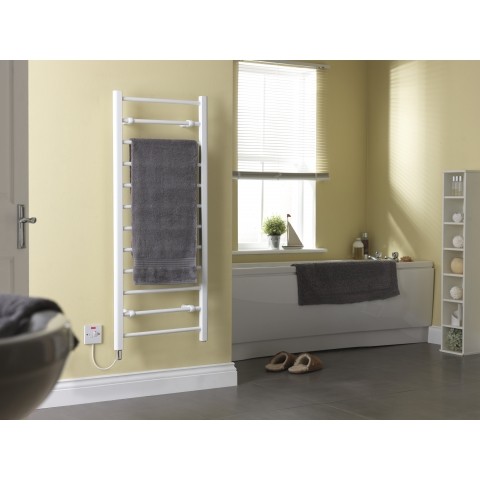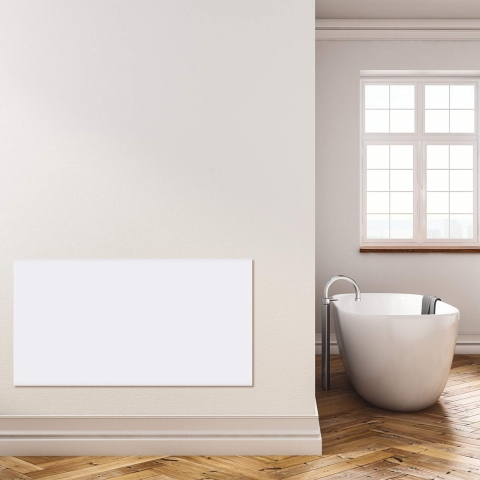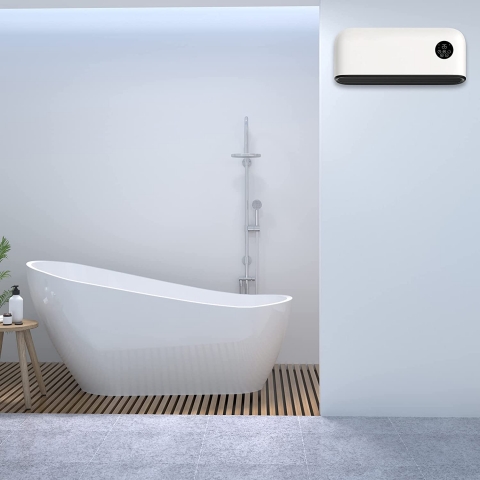
December 7th, 2022 by
It is really important to have adequate heating in a bathroom. That’s not just because it’s nicer to be in a warm room when you come out of the shower or bath or because you need to be able to dry towels, it’s also because you need to be able to dry out a room that produces so much moisture to prevent the development of mould and mildew, which can be harmful to health.
There are certain demands on a bathroom heater that are different to any other room. Firstly, they have to be safe around water and that means they must have an appropriate IP rating. IP stands for Ingress Protection, which relates to how well-sealed they are. There are usually two numbers in the rating (eg IP26). The first relates to protection against solid objects (eg dust, particles etc) and the second is the level of protection against water. It is this second number that you need to consider for a bathroom heater, and it needs to be at least 4.
The other things you might consider are size (bathrooms often tend to be quite small spaces), power, style, energy efficiency, features, and price. Our guide is designed to explore the different options you have and why you might choose them.
Heated Towel Rails
Towel rails are very popular in bathrooms because they offer plenty of space for hanging towels to dry. Warm, dry towels are, obviously, a lovely thing when coming out of the shower but there is an even more important reason for ensuring they dry out as damp towels can create the perfect environment for bacteria to develop.
Towel rails tend to be vertical, which is a great space saver in a small room with lots of competition for wall space and they also look great in most styles of bathrooms. Options include standard ladder-type units or smaller models, such as this S-shaped towel rail, which is ideal for a downstairs cloakroom or en suite. A chrome finish tends to be the most common but you can also choose models in white which can either be chosen to blend in with a pale bathroom wall or contrast with something more vibrant and made part of the design scheme.
You can get wet system towel rails, that are plumbed into your central heating, or electric ones, which are standalone and need to be installed by an electrician (one of the great things about an electric one is that they can be operated independently so you can still get towels dry in the summer when the heating’s not on).
Prices range from around £85 for a small one to around £300 for a large model.
See all bathroom towel rails here.
Panel heaters
Electric panel heaters with an appropriate IP rating can be used in bathrooms very safely. You can’t hang towels directly on them but they will put out a good amount of heat into the space so you can get them dry on a freestanding towel holder.
Panel heaters have the advantage of being very energy efficient, especially those that are Lot20 compliant (which demonstrates they have achieved a range of energy-efficient criteria). They can also come with a range of features, such as timers, and accurate thermostats and some are even smart enabled, meaning you can control them via an app on your phone.
Prices range from around £70 to £350, depending on size, features, and style.
See all bathroom panel heaters here.
Fan Heaters
Fan heaters are great for smaller bathrooms where space is limited as they are very compact and installed high on the wall. They distribute heat well around the room because of the fan, so will warm the space very quickly, and are both inexpensive to buy and run as 1KW of power is enough to heat most bathrooms.
Prices start from just £40.
See bathroom fan heaters here.
Over Door Heaters
Over-door heaters, also known as air curtains, have the advantage of very effective heating without needing to sacrifice usable space, because they are literally installed over the door. They create an invisible curtain of air so very little heat is lost when the door is opened, and many come with timers, remote controls, and thermostats for efficient, accurate heat.
Many operate using traditional convective heat and a fan (meaning they heat the air, which then circulates around the room). However, you can get models that use radiant heat, which means they heat objects (fixtures, fittings, and even people) rather than air which minimises heat wastage and heats up very quickly.
Prices range from £40 to £220.
See over-door heaters here
Comments
Leave a reply
Your e-mail address will not be published. All fields are required


